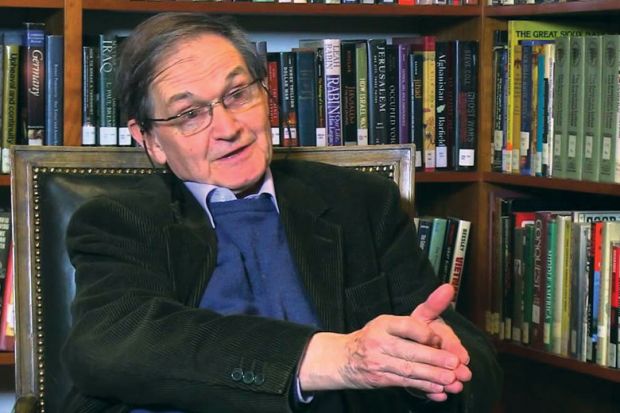Since physics is not an endeavour pursued by an army of ultra-logical Mr Spocks but rather by human beings, fashion, faith and fantasy play a role. This is not necessarily bad, as the ultimate arbiter of whether or not theories are correct is nature and not physicists. However, it can be of concern if, for instance, fashion shifts a disproportionate quantity of human and financial resources into one particular research area – which may turn out to be a dead end – at the expense of others. This prospect worries Roger Penrose.
Sir Roger Penrose (pictured above) is one of the most important theoretical physicists of the past 50 years. Between 1965 and 1970, he and Stephen Hawking proved a range of powerful “singularity theorems”, the most important of which demonstrated that, under a wide range of general and highly plausible conditions, a “singularity” was unavoidable in the Big Bang. Since, at a singularity, all physical quantities such as temperature skyrocket to infinity, this showed that Einstein’s theory of gravity, which describes the evolution of the universe, contains within it the seeds of its own destruction. Penrose also, incidentally, found a way of tiling a flat plane with shapes exhibiting five-fold symmetry, a scheme that, incredibly, had entirely eluded the Islamic world.
The first of Penrose’s three major concerns is the “faith” that physicists have that quantum theory is fundamentally a theory of isolated objects. This leads to the orthodox view that isolating big things such as humans or computers will enable them to do quantum things such as occupying two places at once. Penrose instead thinks there is a threshold mass at which gravity destroys the root cause of quantum weirdness – the interaction between the multiple possibilities encapsulated in a “quantum superposition”. Experiments are under way to test this.
Penrose, in this engaging but rather technical book, also takes issue with “fashionable” superstring theory, a major hope for unifying quantum theory and Einstein’s theory of gravity, in which the fundamental building blocks of the world are ultra-tiny vibrating “strings” of mass-energy. His particular bone of contention is that the theory requires six extra dimensions, not only contradicting reality but massively complicating the physics. String theorists brush this aside, says Penrose, mesmerised by the mathematical beauty of their scheme and its generalisation, M-theory, and by the fact that it is the only quantum theory known to incorporate Einstein’s theory of gravity.
Finally, Penrose turns to the “fantasy” of the standard Big Bang cosmology on to which is bolted an ad hoc epoch of super-fast expansion in the first split second of the universe. Although observations are compatible with such “inflation”, after 35 years, we still have no theory of the microscopic physics that underpins it. Penrose proposes an alternative in which the smooth distribution of matter in the universe is created not by the breakneck expansion of inflation but by a mechanism not a million miles away from the multiple-Big Bang “cyclic universe” of Paul Steinhardt and Neil Turok.
In standing outside the fray and criticising the central dogmas of fundamental physics, Penrose is playing the role of Einstein, who forced quantum theorists to defend and hone their ideas, and Sir Fred Hoyle, who persistently challenged Big Bang theorists to sharpen their ideas. This is an extremely important role, and long may Penrose fulfil it.
Marcus Chown, formerly a radio astronomer at the California Institute of Technology, is author, most recently, of What a Wonderful World: Life, the Universe and Everything in a Nutshell (2014).
Fashion, Faith and Fantasy in the New Physics of the Universe
By Roger Penrose
Princeton University Press, 520pp, £19.95
ISBN 9780691119793
Published 5 October 2016




